SPARC’s Anvil on the Scale
More than a decade of direct evidence shows that SPARC has been a major resource and influence of US government access policies
Yesterday, a long-delayed Freedom of Information Act (FOIA) request dealing with SPARC and covering the period of 2010-2017 produced a final deliverable. The request was related to a previous one covering 2017-22.
From the initial, partial response, we gleaned several facts about SPARC, including the fact that its Executive Director, Heather Joseph, was so cozy with the NIH that she had been placed on the Search Committee for the new NCBI Director. After this fact was reported here, denials occurred, things quietly changed, and an acting Director was promoted without fanfare.
We also learned that SPARC has been putting its thumb on the scale at the NIH, NLM, and NCBI at least back to 2017, turning itself into a resource often used by staff seeking advice on myriad publishing-related topics, without apparently any concern they were dealing with a lobbyist, identified as such since 2014.
The supplemental FOIA request sought to see if these entanglements stretched back further, at least to 2010.
SPARC began as part of ARL. When its lobbying activities became so significant that ARL’s non-profit status was threatened, it was spun out in 2014 via an agreement with a fiscal sponsorship organization — the New Venture Fund (NVF).
- Heather Joseph is paid by NVF, which is a lobbying firm. If you need to catch up, here’s a bit of an overview. You can also find more on the site by searching on “SPARC.”
ARL’s memo about the move to NVF noted that SPARC’s lobbying activities were becoming so significant that “joint lobbying activities are coming close to the allowable limit for nonprofit organizations of our size.”
In other words, as of 2014, it was no secret the SPARC was an unregistered lobbying firm — a separate issue, which NVF might allow them to avoid as it is a registered lobbying firm, with SPARC a project within it. Slick.
It also seems people inside NLM, NIH, and NCBI were well-aware that SPARC was lobbying, with some key players — David Lipman, Ed Sequeira, Joyce Backus — cc’d in the email below:
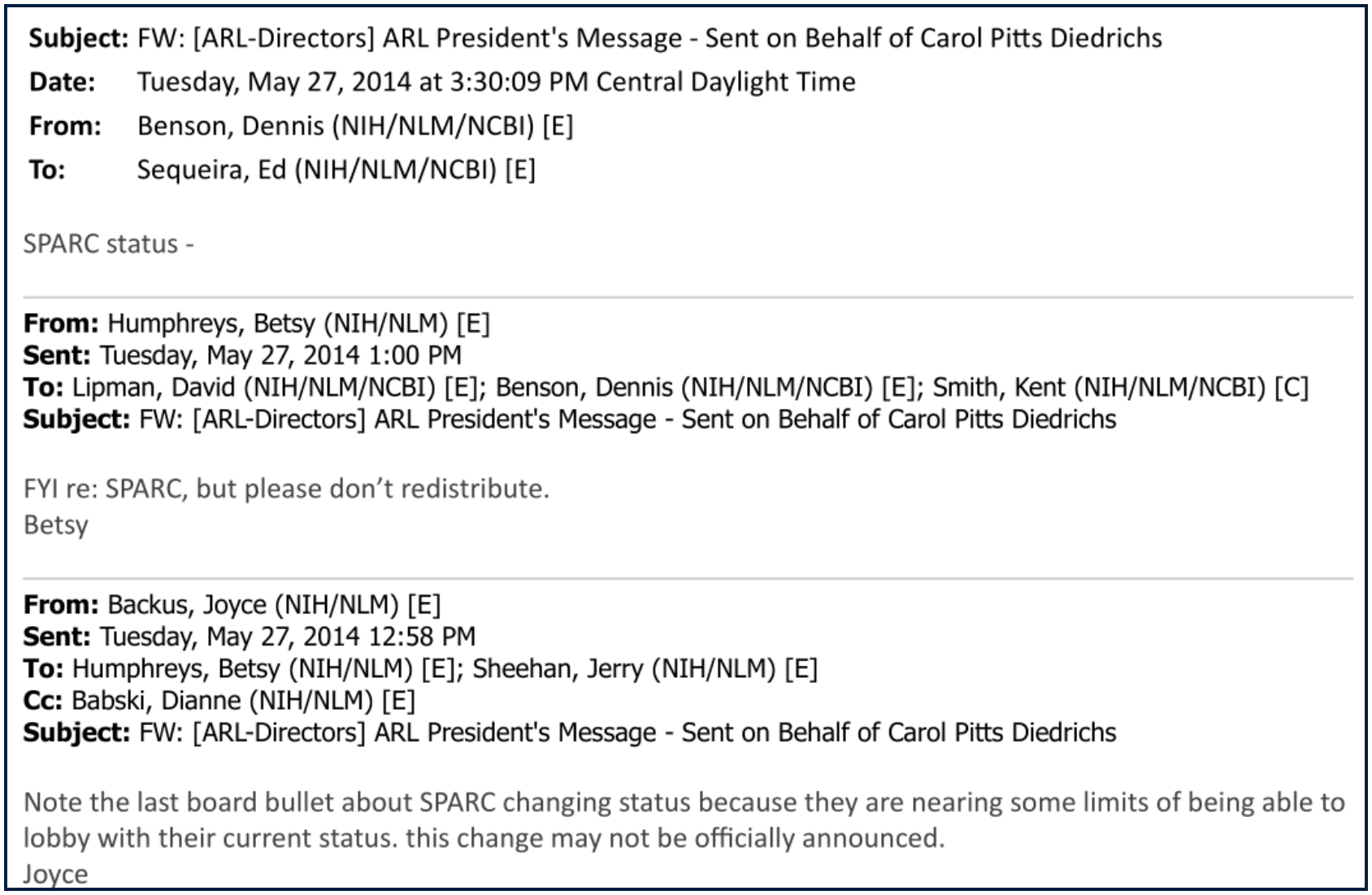
But so what? Lobbyists can write legislation for Congress, after all — so what is the problem if lobbyists are advising the NIH, NLM, and others about publishing? AAP and some of the large publishers also have lobbyists — but none as cozy with the NIH, it must be noted as an important meta caveat.
Well, there are two aspects of the NIH’s Employees’ Guidelines that may have some bearing:
- An NIH employee must not participate in business or financial matters of an outside organization
- Fundraising or lobbying during official duty hours using official resources is prohibited
There is also the overall impression that such entanglements create, especially if they endure and become a source of favors and persistent, unchecked influence.
As for the main characters — Lipman was Director of the NCBI at the time (he left in 2017), Harold Varmus was the former Director of the NIH and the instigator of E-Biomed in the 1990s, and Heather Joseph is the Executive Director of SPARC. Other individuals will come in and out, but Lipman and Joseph are our two main protagonists.
I am not commenting much, but will let the emails speak for themselves, so you can judge whether any boundaries may have been crossed, how much influence SPARC exerted at various points, and just how this all strikes you.
- Because these are emails, it often helps to read from the bottom up.
- One aspect not presented is the sheer number of emails arranging phone calls between Joseph and Lipman. They talked a lot.
Seeking the Avoid “a problem”
Lipman worries he’s walking into a trap by speaking alongside a certain individual, asks Joseph for advice. Clearly, the two are already very well-acquainted.
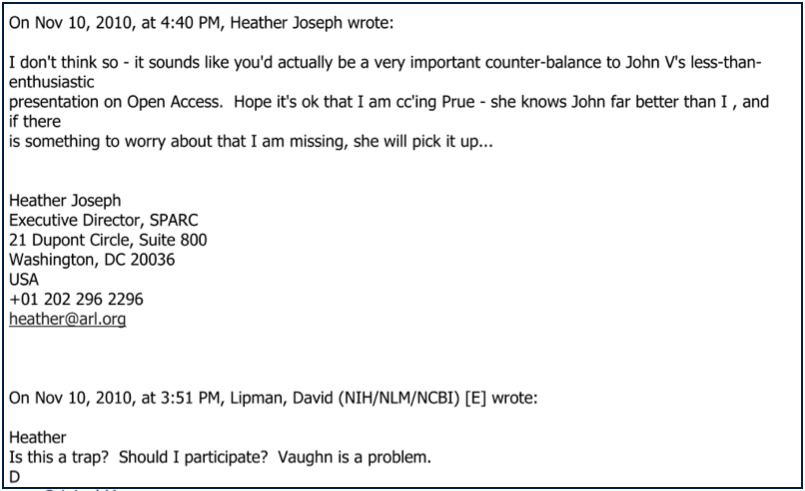
Varmus, Lipman, and Joseph Plan
In early 2012, Congressman Darrell Issa floated the Research Works Act (RWA), intended to protect private research investment. Within just over a month, Issa had learned his lesson, and was calling OA “the wave of the future.” Elsevier initially supported it, but withdrew its support, as well. Maloney is former Congresswoman Carolyn Maloney.
Here’s some evidence of the effort to thwart the RWA via coordination between SPARC, Varmus, and Lipman.
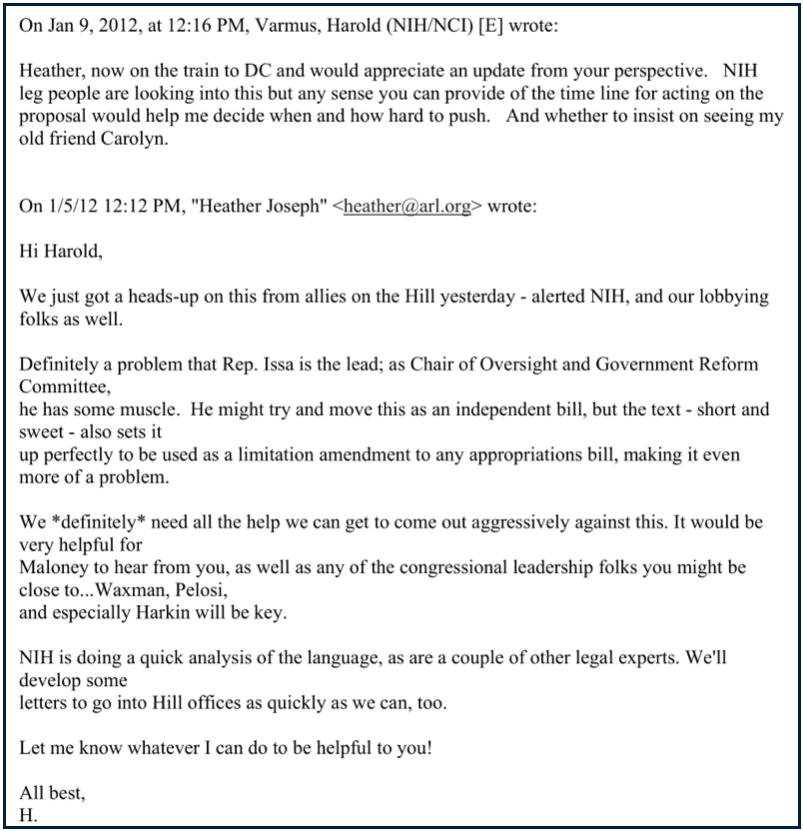
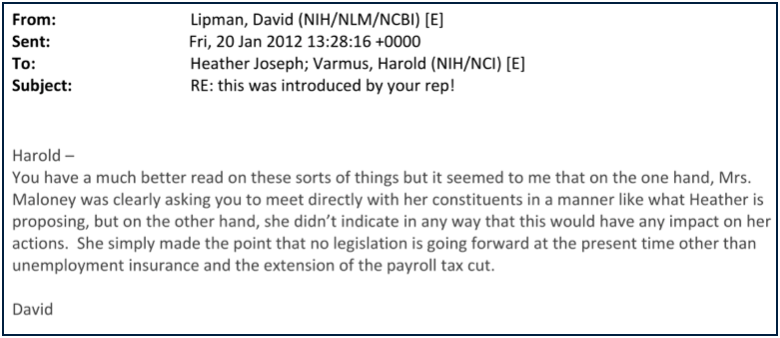
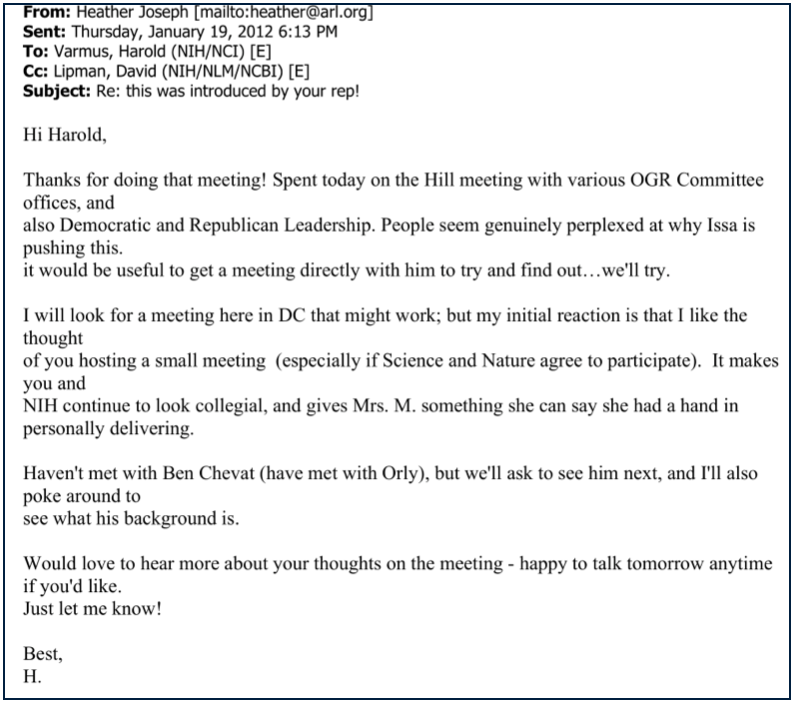
The eLife Scandal of 2012 Gets Discussed
This was after my first “connecting the dots” post in 2012 suggesting that eLife — an initiative of a non-US funder — had received favorable treatment from US government employees via PubMed Central (PMC). It was later that a FOIA request confirmed how corrupt this all had been.
- I can’t believe Joseph misspelled my last name. So disappointing . . .
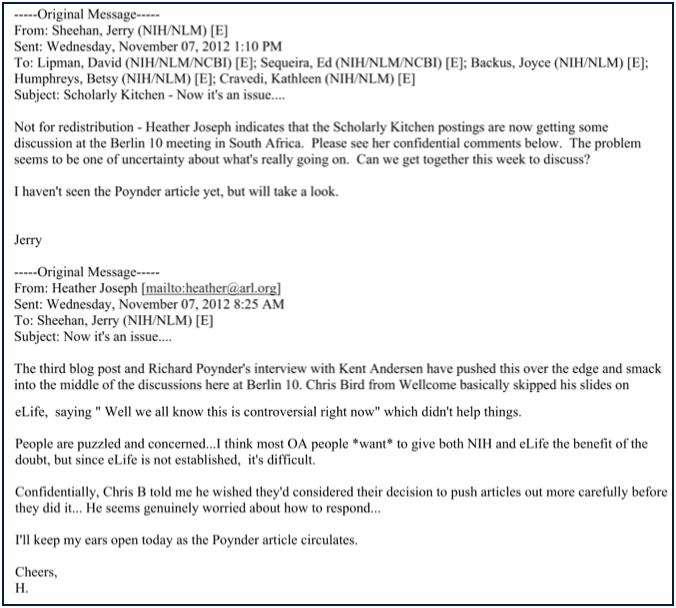
Sharing Interactions with Nature News
This email exchange with Richard Van Noorden of Nature about the emerging eLife/PMC scandal was forwarded to Joseph by Lipman after Van Noorden began following up on my initial post.
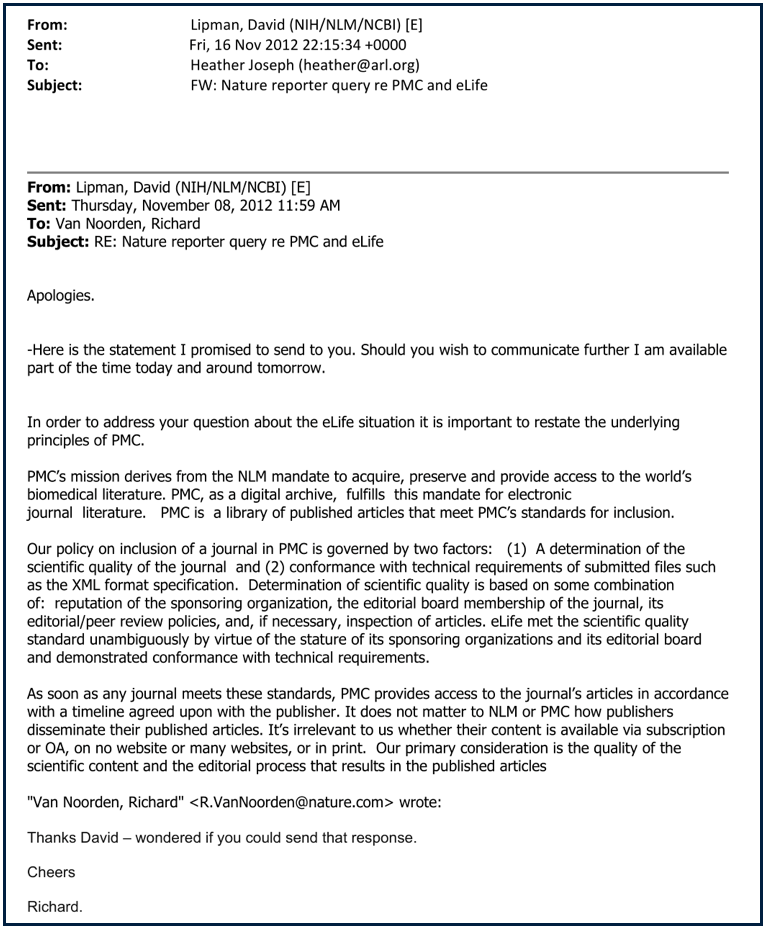
Joseph and Lipman Discuss a Key Politician
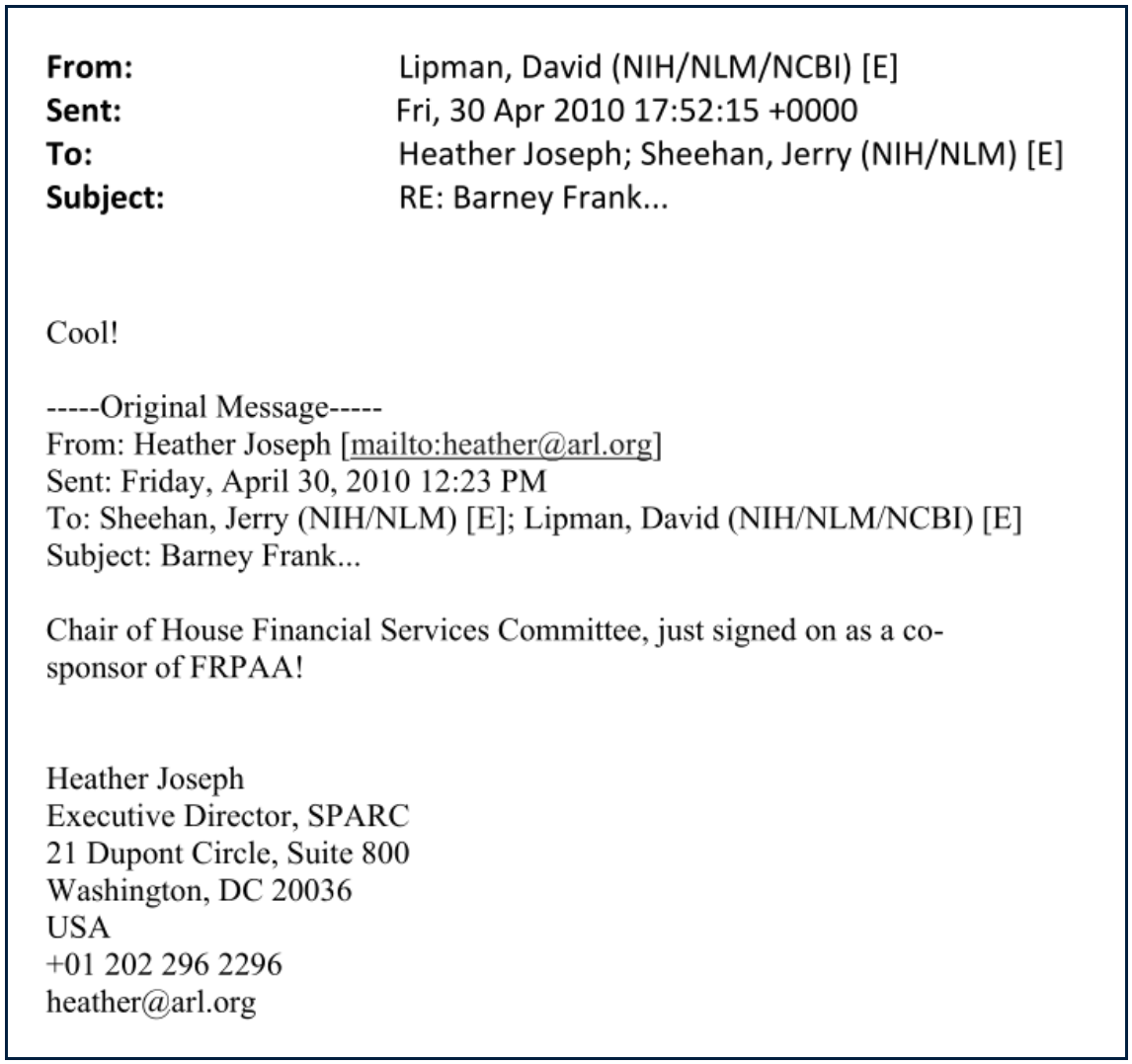
Seeking the Right Accent for a FRPAA Hearing
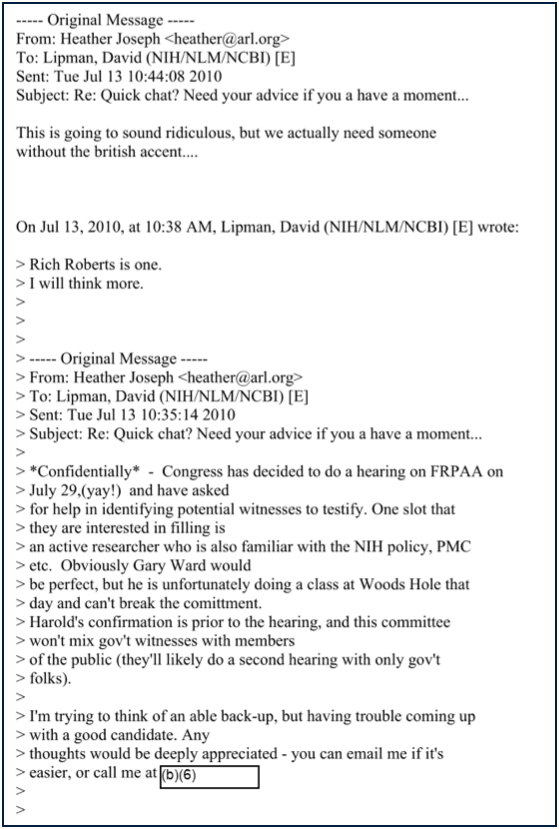
Happy to Land the British Accent, Anyhow
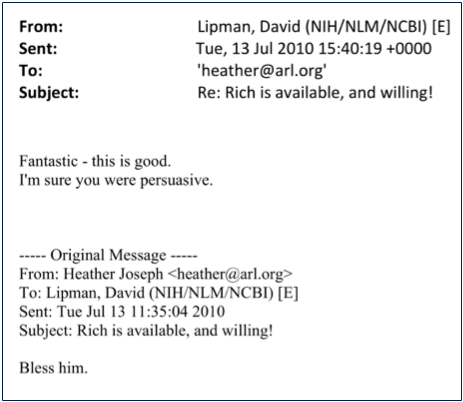
A Lobbyist Advises on Testimony
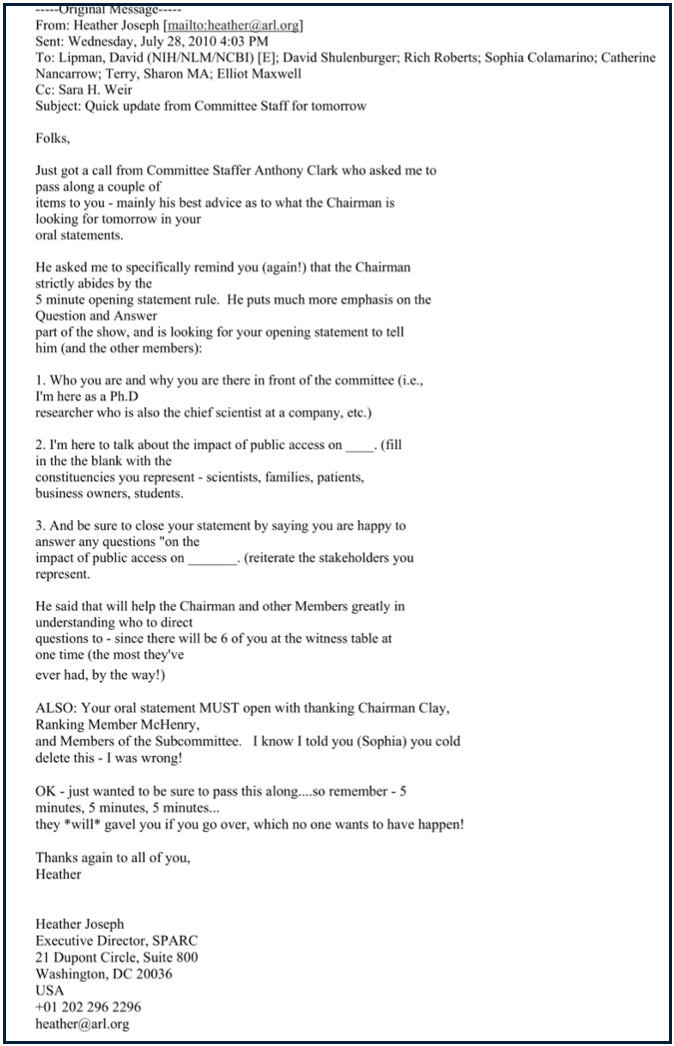
Influencing a Contract at SPARC
This has to do with a contract for an authoring tool created by Carl Leubsdorf, Jr. via a company called Solvitor, which was being discussed by Lipman and Joseph. It appears Lipman was working to get something for NCBI into a contract at SPARC. Ostell was Lipman’s immediate successor in 2017.

A Favor — and Much Fawning
If Lipman’s political views about OA were ever in doubt . . . and blurring the line of exactly who was the lobbyist here.
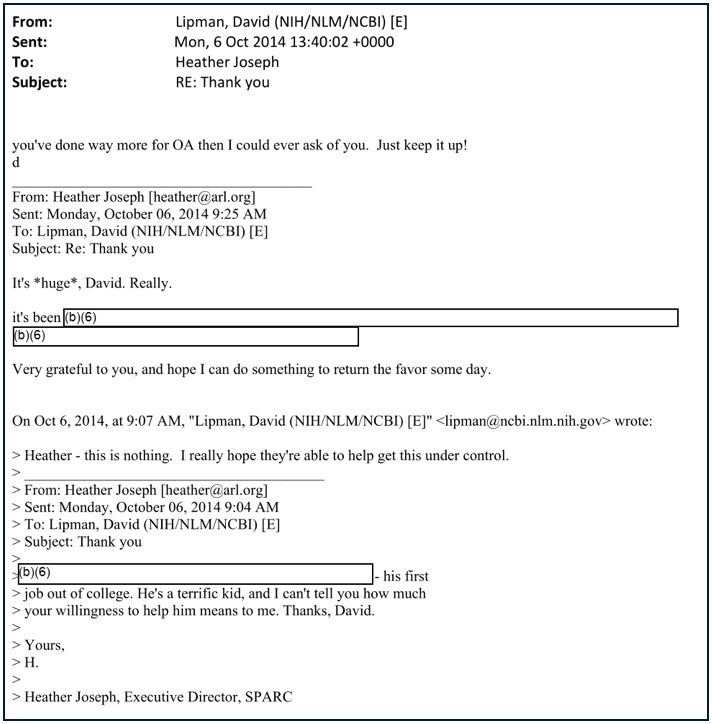
How Do You, Lobbyist, Envision the Future NLM?
This was sent after Donald Lindberg announced his retirement as Director of the NLM.

Collaborating on Writing
I wonder who ended up taking the credit . . . (earlier story which triggered the exchange is here.)
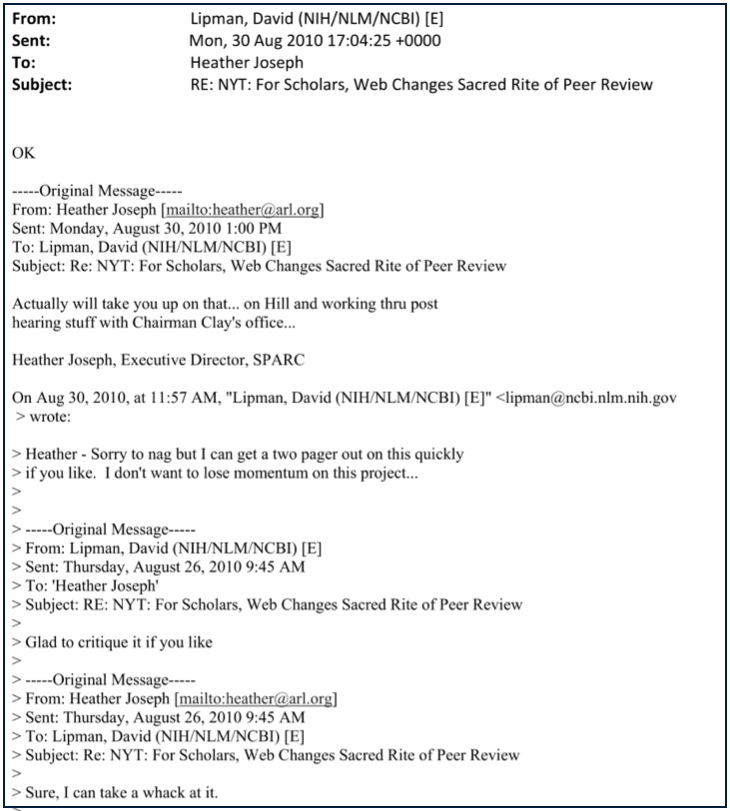
What Did the Fly on the Wall Hear?
This is regarding discussions with (at the time) Vice President Biden’s office about OA and open science. A precursor of sorts?
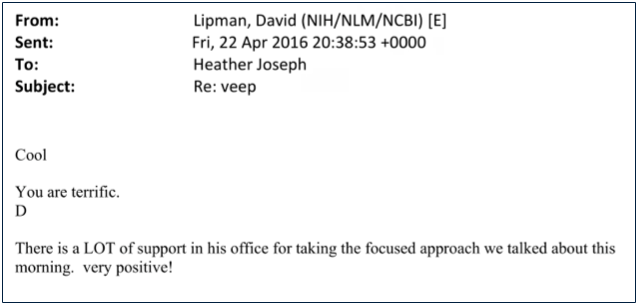
And a Saccharine Conclusion . . .
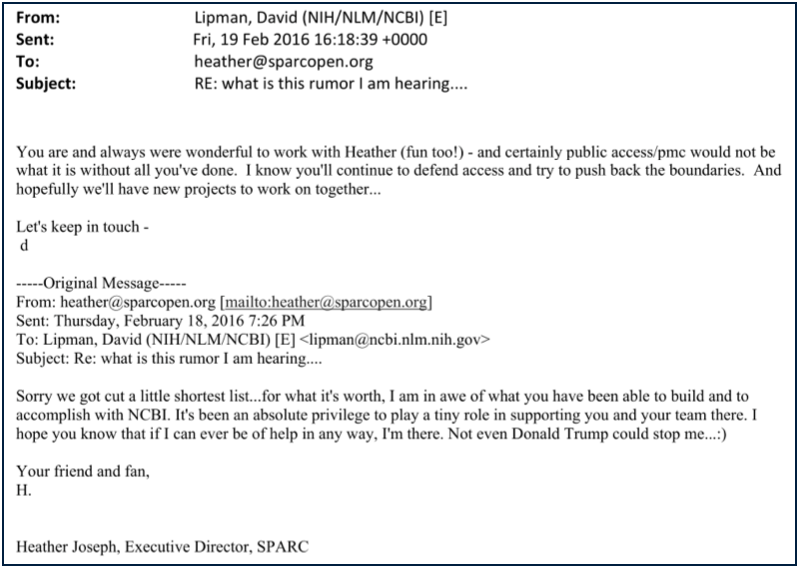
There are more emails mentioning many people and ideas from the period covered, including direct communications about testimony between Joseph, Lipman, and Harold Varmus, former Director of the NIH, but these give you an idea of what’s in the 693 pages.
These emails seem to come from a different time — when OA was full of innocence and promise, before it became clear that it was very exploitable, unable to live up to its billing, and as corruptible as any human endeavor, but more prone to it because advocates always turned a blind eye.
From a policy standpoint, let’s just say that from 2010 — and very likely earlier, as there are references to Joseph having influence over things at NCBI and PMC as early as 1999 — SPARC and its Executive Director have had more than a thumb on the scale of OA policy within the US government.
They’ve had an anvil.